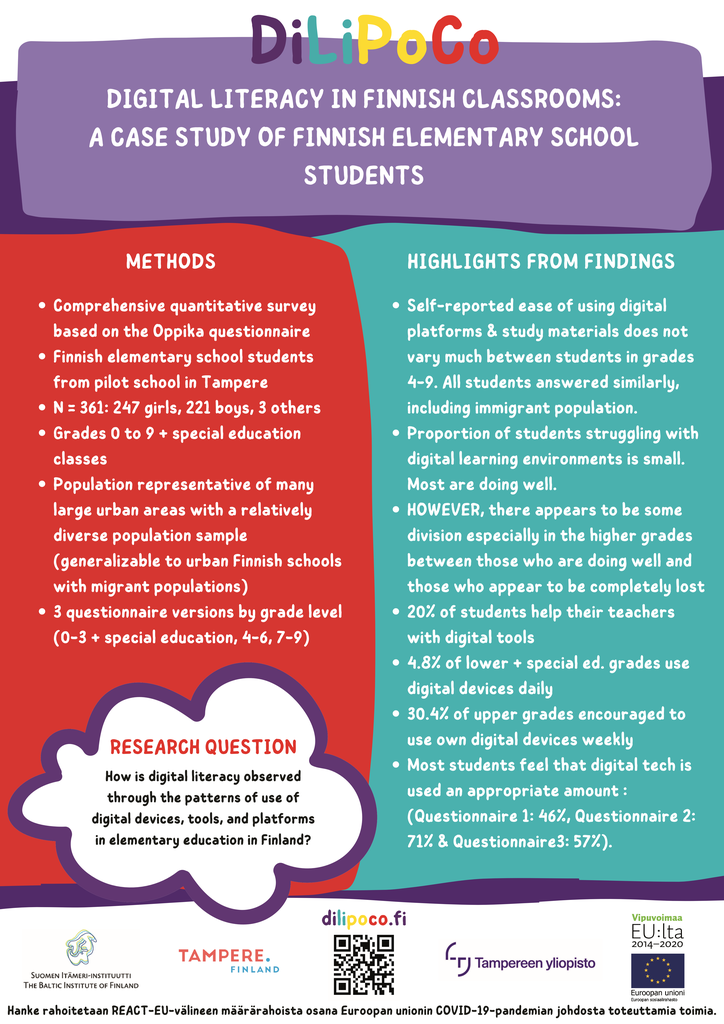-
Vopeka ja Jopeka varhaiskasvatuksen ja esiopetuksen digiosaamisen arviointityökalut
Teppo Terhi
-
Doctoral Consortium
Viteli Jarmo
-
Tavoiteperusteinen opetuksen suunnittelu ja arviointi digitaalisessa ympäristössä
Sälevä Sari
-
Oppilaiden ohjelmoinnillisen ajattelun arviointi ja kehittäminen digitaalisessa oppimisympäristössä
Lehtonen Daranee
-
Putkentaivutuksen VR-sovellus
Mika Aaltonen
-
ViLLE-asiantuntijakoulutus ja omien tehtävien laatiminen ViLLE-oppimisympäristöön
Enges Petra
-
Virtuaalitodellisuus opetuksessa, yhteistyö ja vuorovaikutus
Mattila Maria
-
Testattuja menetelmiä opettajien digi(peda)osaamisen vahvistamiseksi
Halla Mirje
-
Haastavia asiakaspalvelutilanteita virtuaaliympäristössä
Koponen Laura
-
HYVÄ HOMMA! Työelämätaitoja toisen asteen opiskelijoille
Olkkonen Minna

- Luokanopettajat
- Perusaste/lukio: Asiantuntijat, suunnittelijat, ohjaajat, koordinaattorit
- Perusaste/lukio: Rehtorit ja johtajat
Poster in pdf format
The highly digitalized nature of Finnish society, education, and educational systems, alongside the curricular demands of the Finnish National Core Curriculum, require that Finnish school students be fluent when it comes to the use of digital technology in teaching and learning. They also require that digital pedagogy in Finnish schools cover a wide area of competencies, from device and platform literacy to critical media literacy. In light of this, there is a need to understand and gauge the digital competence and literacy of Finnish school students within the scaffolding of the increasingly digitized Finnish classroom environment. Towards this purpose, a study was carried out with the objective of charting the digital competence of Finnish elementary school students through a self-reported survey instrument. The study was a part of the larger Digital Literacy Post-Covid (Dilipoco) project which is a research and development project conducted by Tampere University, The City of Tampere, and The Baltic Institute and funded by the European Union through the European Social Fund. A comprehensive quantitative survey of Finnish elementary school students (n=361), was carried out in a local Finnish school that has a student population representative of many large urban areas with a relatively diverse population sample. The questionnaire was based on the large-scale nationwide student survey Oppika, which is carried out systematically every few years. The proposed poster will present the findings of this study as revealed by a quantitative statistical analysis of the data. Among some interesting findings are the fact that the results within this particular school are somewhat contrary to the national findings and rhetoric concerning the digital competence and performance of immigrant children, for example.